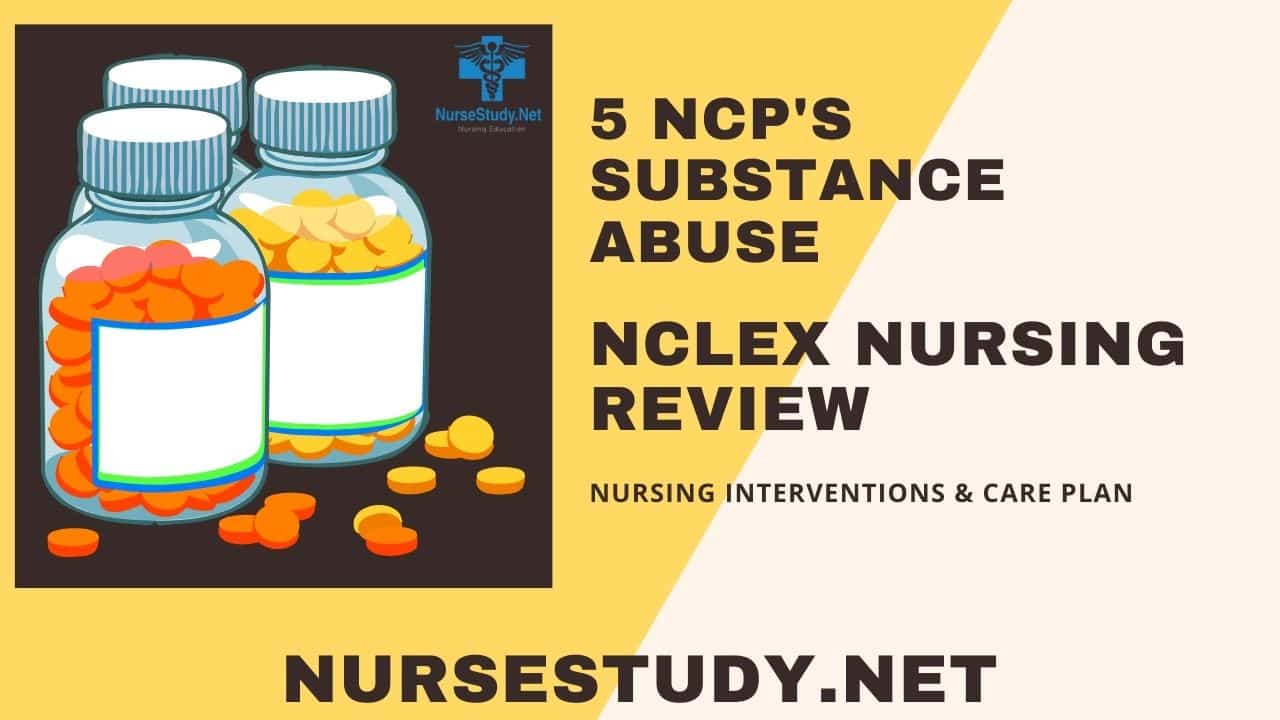Substance abuse represents one of the most challenging health conditions that nurses encounter in their practice. This comprehensive guide explores the essential nursing diagnoses, interventions, and care plans needed to provide effective care for patients struggling with substance abuse disorders.
Understanding Substance Abuse in Clinical Settings
Substance abuse disorder manifests as a complex pattern of behaviors where individuals continue using substances despite significant physical, psychological, and social consequences. As frontline healthcare providers, nurses play a crucial role in identifying, assessing, and treating patients with substance abuse disorders.
Clinical Manifestations
Common signs and symptoms that nurses should assess include:
- Physical dependence and increased tolerance
- Withdrawal symptoms when substance use is reduced
- Persistent substance use despite awareness of harmful consequences
- Neglect of personal responsibilities and relationships
- Failed attempts to control or cease substance use
- Spending significant time obtaining, using, or recovering from substances
- Social isolation and behavioral changes
Nursing Process in Substance Abuse Care
The nursing process provides a systematic approach to caring for patients with substance abuse disorders. This process includes comprehensive assessment, diagnosis, planning, implementation, and evaluation of care outcomes.
Assessment Priorities
Nurses must conduct thorough assessments focusing on:
- Current substance use patterns
- Physical and psychological symptoms
- Risk factors and triggers
- Support systems and resources
- Readiness for change
- Co-occurring mental health conditions
Essential Nursing Care Plans for Substance Abuse
1. Risk for Injury
Nursing Diagnosis Statement:
Risk for Injury related to altered cognitive functioning and impaired judgment secondary to substance abuse.
Related Factors:
- Altered mental status
- Poor coordination
- Impaired decision-making
- History of substance-related accidents
- Withdrawal symptoms
Nursing Interventions and Rationales:
- Implement fall precautions
Rationale: Prevents injury during periods of impaired coordination - Monitor vital signs frequently
Rationale: Early detection of physiological complications - Maintain safe environment
Rationale: Reduces risk of accidental harm - Assess the level of consciousness regularly
Rationale: Identifies changes in mental status requiring immediate intervention.
Desired Outcomes:
- The patient will remain free from injury during treatment
- The patient will demonstrate improved judgment and decision-making
- The patient will maintain physical safety during the withdrawal
2. Ineffective Coping
Nursing Diagnosis Statement:
Ineffective Coping related to inadequate coping mechanisms and poor stress management skills.
Related Factors:
- Limited coping strategies
- Poor stress management
- History of trauma
- Inadequate support system
- Low self-esteem
Nursing Interventions and Rationales:
- Teach stress management techniques
Rationale: Provides alternative coping mechanisms - Facilitate participation in support groups
Rationale: Builds peer support network - Practice relaxation techniques
Rationale: Reduces anxiety and stress - Identify triggers and stressors
Rationale: Helps develop preventive strategies
Desired Outcomes:
- The patient will demonstrate effective coping strategies
- The patient will verbalize healthy ways to manage stress
- The patient will participate in support group activities
3. Disturbed Thought Processes
Nursing Diagnosis Statement:
Disturbed Thought Processes related to chemical alterations in brain function secondary to substance abuse.
Related Factors:
- Chemical imbalances
- Withdrawal symptoms
- Chronic substance use
- Sleep deprivation
- Nutritional deficiencies
Nursing Interventions and Rationales:
- Maintain reality orientation
Rationale: Helps ground patient in the present - Monitor for signs of confusion
Rationale: Early intervention prevents complications - Provide structured environment
Rationale: Reduces anxiety and promotes stability - Ensure adequate nutrition and hydration
Rationale: Supports brain function recovery
Desired Outcomes:
- The patient will demonstrate improved thought processes
- The patient will maintain orientation to reality
- The patient will show improved decision-making abilities
4. Imbalanced Nutrition
Nursing Diagnosis Statement:
Imbalanced Nutrition: Less than Body Requirements related to poor dietary habits and substance abuse effects.
Related Factors:
- Poor appetite
- Inadequate food intake
- Altered metabolism
- Financial constraints
- Gastrointestinal problems
Nursing Interventions and Rationales:
- Monitor nutritional intake
Rationale: Ensures adequate nutrition - Provide nutritional supplements
Rationale: Addresses nutritional deficiencies - Implement a regular meal schedule
Rationale: Establishes healthy eating patterns - Monitor weight and vital signs
Rationale: Tracks nutritional status improvement
Desired Outcomes:
- The patient will maintain adequate nutritional intake
- The patient will demonstrate weight stabilization
- The patient will show improved energy levels
5. Readiness for Enhanced Recovery
Nursing Diagnosis Statement:
Readiness for Enhanced Recovery related to an expressed desire to maintain sobriety and improve health status.
Related Factors:
- Motivation for change
- Support system availability
- Access to resources
- Previous recovery attempts
- Understanding of addiction
Nursing Interventions and Rationales:
- Develop recovery goals
Rationale: Provides direction and motivation - Connect with support services
Rationale: Ensures continuity of care - Teach relapse prevention strategies
Rationale: Prepares for long-term success - Encourage family involvement
Rationale: Strengthens support system
Desired Outcomes:
- The patient will actively participate in recovery planning
- The patient will demonstrate commitment to sobriety
- The patient will utilize support systems effectively
Evidence-Based Practice References
- Ackley, B. J., Ladwig, G. B., Makic, M. B., Martinez-Kratz, M. R., & Zanotti, M. (2023). Nursing diagnoses handbook: An evidence-based guide to planning care. St. Louis, MO: Elsevier.
- Garofoli M. Adolescent Substance Abuse. Prim Care. 2020 Jun;47(2):383-394. doi: 10.1016/j.pop.2020.02.013. Epub 2020 Feb 21. PMID: 32423721.
- Frances RJ. Substance abuse. JAMA. 1991 Jun 19;265(23):3171-2. PMID: 2041142.
- Milroy, C. (2025). Substance Misuse: Substance Abuse—Patterns and Statistics. Encyclopedia of Forensic and Legal Medicine (Third Edition), 439-444. https://doi.org/10.1016/B978-0-443-21441-7.00230-2
- Reid AG, Lingford-Hughes AR, Cancela LM, Kalivas PW. Substance abuse disorders. Handb Clin Neurol. 2012;106:419-31. doi: 10.1016/B978-0-444-52002-9.00024-3. PMID: 22608635.
- Silvestri, L. A. (2023). Saunders comprehensive review for the NCLEX-RN examination. St. Louis, MO: Elsevier.
- Wada K. [Abuse, dependence and intoxication of substances]. Nihon Rinsho. 2015 Sep;73(9):1450-6. Japanese. PMID: 26394503.
